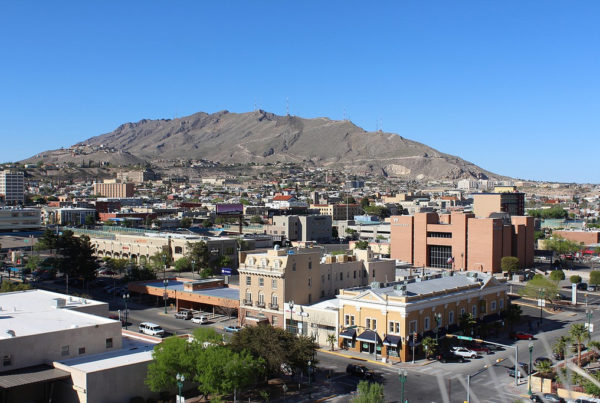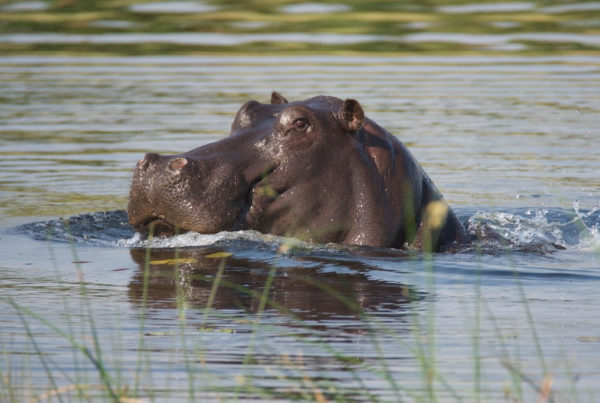The Texas Hill Country has a reputation for stunning views. It’s popular with tourists during wildflower season. And cities such as Fredericksburg draw big crowds during festivals, or almost anytime for those looking for some good window-shopping. The Hill Country has also become the epicenter for the state’s wine tourism.
But before Hill Country growers can put quality wine on the shelves, they first have to contend with mother nature.
Gina Ross is the Assistant Winemaker at Stone House in Spicewood. It’s a seven-acre estate vineyard that sits on a bluff overlooking Lake Travis. With unusually warm temperatures this year, Ross says buds on her vines started popping out three weeks earlier than normal.
“When you own or work in a vineyard, I think you become obsessed with the weather by default,” Ross says. “Over the last few years, we have seen a warming trend in the sense that we’re noticing overall degree days and temperatures being higher than they have in years past.”
Just outside the Stone House tasting room, Ross surveys rows of vines with thick, healthy canopies – still mostly green, even late into October.
“They don’t usually have this many leaves on them at this point in the season,” she says.
This year, high temperatures led many growers in the Hill Country to harvest early – which was lucky. It meant grapes were already off the vine by the time Hurricane Harvey hit Texas in late August. The storm put much of the Hill Country under a flash flood watch, which could have spelled disaster for this year’s crops.
This kind of extreme weather has growers working to arm their wineries against the Hill Country’s unpredictable climate.
“There’s still a lot of experimenting going on,” says Gary Elliott, who owns Driftwood Estates Vineyard. He’s been watching the weather closely since he started growing grapes in 2002. That was back when there were only about 35 vineyards in Texas. Now there are more than 50 in the Hill Country alone.
Elliott says most wineries starting out weren’t sure which grapes would grow well in the area, so they tried everything.
“Throw it all on the wall and see what sticks,” he says.
But now many growers are finding varieties that thrive in other parts of the state aren’t suited for the Hill Country. That has a lot to do with the region’s geography.
“We actually sit on this cusp of a change region,” says Colin Iliff, a wine steward at Wimberley Valley Winery in Driftwood. He says the Hill Country has a distinct microclimate, partly because of its position in the Balcones Escarpment. The limestone topography makes the area dry and rocky but also prone to flash flooding.
He says growers are combating these geophysical challenges by opting for lesser-known grapes from warm areas around the Mediterranean where microclimates are similar to Central Texas.
“More syrah and grenache, which are southern French varietals and mourvedre especially. You see a lot of southern Italian wines, Tuscan wines – sangiovese, v vermentino, montepulciano,” he says.
In his research at Texas State, Illif found parallels between well-established wine regions like Bordeaux and Burgundy in France, and trends growers are noticing in Texas.
“We’re starting to see that the climates that are distinct to these regions are shifting,” Illif says.
Christi Townsend has researched viticulture and climate in Texas for about a decade. For her dissertation at Texas State, she spoke with more than 100 wineries from around the state. That showed her just how many different biological and environmental hazards there are for growers in the state.
“Working with something as delicate, as persnickety as grapes – that makes it an even bigger challenge,” Townsend says.
That’s why many growers are looking outside the mainstream. Iliff started to think about similarities between the microclimates in Hungary and central Texas while enjoying a glass of wine with his Hungarian stew in Budapest.
“There are old world varietals in Hungary that offer all these beautiful characteristics that could do very well here,” he says.
While these grape varieties might grow well in the Hill Country, they don’t have the same name recognition as other well-known varieties. Townsend said that makes them harder to sell.
“They run into some marketing issues with that,” she says. “If you go to the grocery store, you’re going to look for a traditional variety like Cabernet or Merlot or Chardonnay. They’re less familiar with those types of wines and might be less likely to give them a try.”
But since the Texas wine industry is still making a name for itself nationally, some growers might be hesitance to make the switch, for fear of losing business.
“We have vineyards still growing it because that’s what’s economically viable,” says Gina Ross at Stone House. She says that didn’t stop owner Angela Moench when she started her vineyard in 1998. She planted all seven acres with Norton grapes, an American variety that she knew would survive harsh weather. The name might not be familiar, but Ross said the wine speaks for itself.
“I know that people aren’t going to see a norton wine on the shelf and pick it up on their own. It’s very much what we call a ‘hand sell’ – where you do have to taste it and then you’re going to like it,” Ross says.
For Gary Elliott at Driftwood Estates, marketing Texas wine isn’t about the name of the grape, but quality of the wine across the board.
“Branding is a big thing. And branding isn’t just your label, it’s everything that you do,” he says.
But that’s a steep learning curve in a climate that’s as volatile as the Hill Country’s.
“What works today may not work tomorrow, what worked 10 years ago may not work today — it’s in flux,” Elliott says.
It’s a challenge that doesn’t seem to be scaring off new wineries. The Texas Wine and Grape Growers Association commissioned a study that found the state’s close to 400 wine producers have a more than $13 billion yearly economic impact.
















